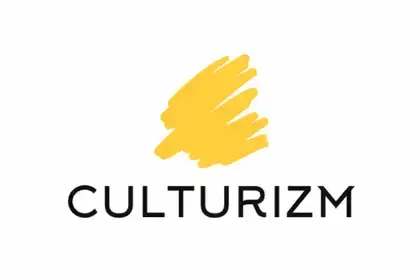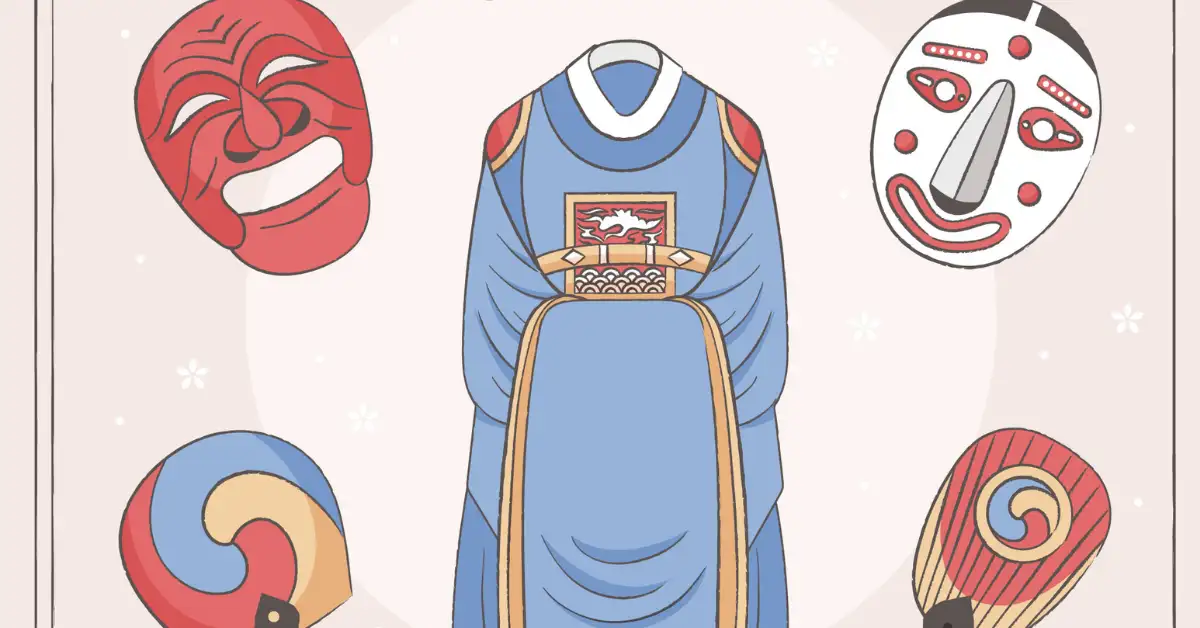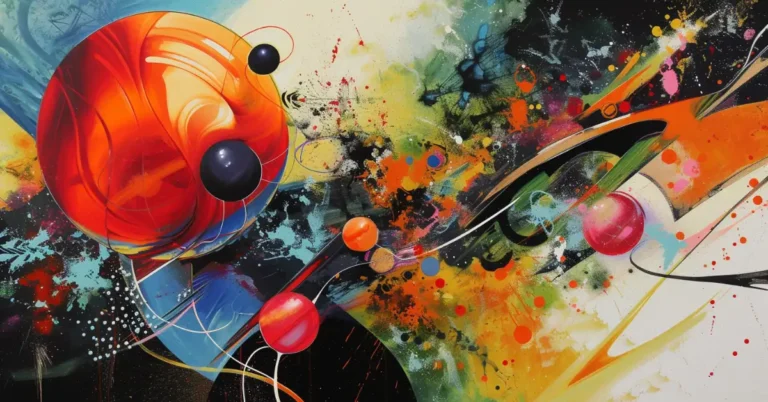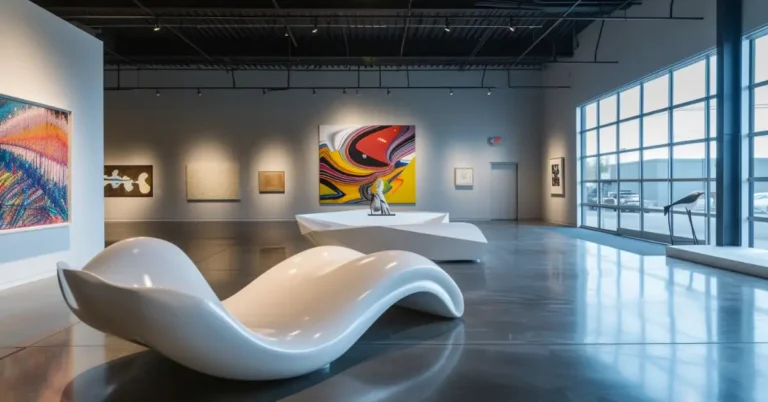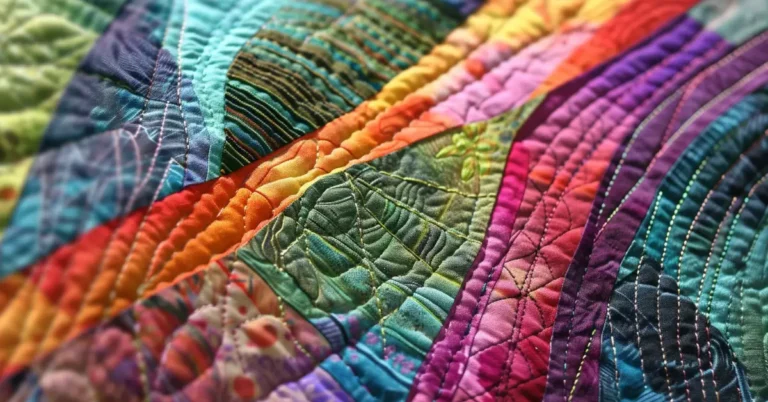Discover the vibrant world of Korean contemporary art, where traditional techniques meet cutting-edge expression. This article dives into the heart of Korea’s art scene, showcasing how artists like Park Seo-Bo and Lee Ufan have revolutionized the field with movements such as dansaekhwa and the innovative use of hanji paper. Prepare to explore a realm where monochromatic simplicity and complex emotion intertwine, offering a unique and inspiring artistic experience.
What is the Essence Of Korean Contemporary Art?
From its early modern art roots to current avant-garde movements, it has continuously pushed boundaries and challenged our perception of what art can be. Korea’s contemporary art scene has a rich history, encompassing abstraction, dansaekhwa, hanji paper, and the influential works of artists like Park Seo-Bo and Lee Ufan.
Abstraction emerged as a prominent theme in Korean contemporary art, particularly in the dansaekhwa movement. This artistic style focuses on the meditative aspect of the creative process, often using repetitive mark-making and minimal palettes. The emphasis on simplicity in dansaekhwa complements Korea’s traditional aesthetics and philosophy.
One material that stands out in Korean contemporary art is hanji paper, a traditional Korean paper made from mulberry tree bark. Hanji paper holds a special significance in Korean culture and has become a unique medium for many artists, enriching their work with texture and an intimate connection to the nation’s heritage.
Park Seo-Bo, a leading Korean contemporary artist, is best known for his pioneering work in the dansaekhwa movement. His diverse techniques and materials, often incorporating hanji paper, are characterized by their remarkable simplicity and depth. These qualities echo Park Seo-Bo’s quest for self-discovery through art.

- This is hanji paper
Another pivotal figure in the Korean contemporary art sphere is Lee Ufan. As a co-founder of the Mono-ha (School of Things) movement, his works emphasize the interplay between natural and industrial materials. This focus reflects the artist’s philosophy of coexistence, transcending cultural and geographical boundaries.
Lastly, gender is an increasingly vital theme in Korean contemporary art. As artists continue to explore and challenge social norms, they bring vital perspectives to the ongoing discourse around gender roles and equality.
Korean contemporary art is a vibrant and evolving realm that intrigues and inspires with its unique materials, techniques, and themes.

- This is an artwork by Park Seo-Bo
Korean Art In The International Scene
We couldn’t help but notice the increasing presence of Korean contemporary art in the international art scene. In recent years, exhibitions and art fairs in major cities like Paris have showcased the remarkable talent of artists from South Korea.
Korean contemporary art has also gained recognition in prestigious events such as the Venice Biennale and the Gwangju Biennale. These platforms have allowed a wider audience to appreciate the unique artistic expressions and cultural narratives presented by Korean artists. With all this attention, it comes as no surprise that Korean contemporary art has piqued the interest of both Western art enthusiasts and connoisseurs alike.
The international exposure has led to a creative dialogue between Korean contemporary art and Western art practices. Influences from both sides have inspired innovative techniques and fresh perspectives, making Korean art even more appealing to a global audience. This exchange of ideas has not only enriched the creative landscape but also fostered a greater understanding and appreciation of different cultures and artistic expressions.
Forms and Mediums In Korean Art
We often find ourselves deeply immersed in the captivating world of Korean contemporary art. This alluring art form is full of rich and diverse techniques and themes that make it stand out. Whether it’s painting, video, photography, or installation, the unique blend of traditional and modern elements shines through, creating a mesmerizing visual experience.
One of the most iconic and widely recognized forms of Korean contemporary art is painting. Masterpieces range from intricate ink and brush paintings reflecting Korea’s cultural heritage to avant-garde pieces that bend the rules of visual aesthetics. Korea’s thriving painting scene knows no bounds, as traditional themes coexist harmoniously with striking modern concepts.
Not just limited to paintings, Korean artists continue to push the boundaries of creativity with remarkable installations and performance art. The use of unconventional mediums and materials, like neon signs and embroidery, helps to convey subtle messages and challenge our preconceived notions of what art is all about.
Photography and video are also integral components of Korea’s modern art landscape. Artists leverage these mediums to explore deeper philosophical relationships between the viewer and the subject. In some cases, immersive multimedia installations integrate photography and video, encompassing us in a visually stunning world of artistic expression.
Sculpture, another vital aspect of Korean contemporary art, connects us to Korea’s historical roots while showcasing innovative techniques. The marriage of ancient and modern styles breathes new life into the sculptural forms, resulting in evocative and thought-provoking pieces.
IG: gallery2, sabukaru.online, asiancontemporaryart
Political And Social Dimensions
From the onset, we want to captivate your interest with the incredible journey of Korean contemporary art in the context of its political and social dimensions. A rich tapestry of experiences, the art reflects the nation’s history, continuously adapting to the changing landscape.
One compelling aspect in the realm of Korean contemporary art is how it tells the story of colonization, a prominent theme since the early 1900s. As Korea underwent a transformation under Japanese rule, traditional art evolved, and the introduction of oil painting marked a significant change in artistic expression. This, in turn, allowed artists to address the complex issues brought on by colonization.
Moreover, political tensions have always influenced the direction Korean contemporary art has taken. As authoritarian regimes imposed censorship, artists began navigating these challenges, often using subtle references and symbols to challenge oppressive conditions.
From the late 1970s to the 1980s, a new figurative painting style emerged: Korean Hyperrealism. Born from societal changes and technological advancements, this style evolved as a way for artists to critique corruption and highlight societal issues through their work.
Fast forward to the present, artists are now exploring political dimensions in a global context. North and South Korean politics shape contemporary art, as their unique relationship has influenced popular culture and identity.

IG: @galleryhyundai, yoogeuntaek
Influence Of Western Art And Pop Culture
As we strive to understand Korean contemporary art, it’s essential to consider the impact of Western art and pop culture on its development. The fusion of traditional Korean techniques with foreign aesthetics has resulted in a unique style that continues to evolve.
One significant influence on Korean art is Western art. Throughout the 20th century, innovative European and American artists inspired Korean artists to experiment with new techniques and themes beyond their own traditional practices. This has made it possible for them to push boundaries, combine various artistic approaches, and create a distinct style that reflects their cultural heritage while being openly influenced by Western contemporary art.
In addition to Western art, K-pop has played a notable role in shaping the perception of Korean contemporary art. Today’s K-pop aesthetics are often deeply intertwined with visual arts, giving birth to a vibrant and dynamic artistic culture. Vibrant use of colors, futuristic design elements, and attention to detail in K-pop visuals, album covers, and music videos have directly or indirectly influenced the artistic direction of many Korean contemporary artists.
Furthermore, the global success of K-pop has drawn attention to Korea’s contemporary art scene, helping to increase the exposure of Korean artists on international platforms. The captivating visuals of K-pop have showcased the unique blend of traditional and modern artistic styles, reflecting the rich cultural heritage and creativity Korea has to offer.

IG: kwangyoungchun
Art Scene Infrastructure In South Korea
We have been observing the ever-evolving Korean contemporary art scene and can’t help but appreciate the fantastic infrastructure that supports it. South Korea has witnessed a surge in cultural investments, fostering state-of-the-art museums and galleries that create a thriving environment for both emerging and established artists.
One major development in the art scene was the influx of international galleries establishing branches in Seoul, driven by the anticipation of Frieze Seoul in 2022. Such expansions demonstrate the global recognition and newfound relevance of Korean contemporary art to the rest of the world.
Moreover, South Korea boasts an impressive array of museums, such as the National Museum of Modern and Contemporary Art in Seoul. These institutions showcase cutting-edge exhibitions, from retrospectives to thematic explorations, providing an ideal platform for artists and viewers alike.
When it comes to galleries, Seoul stands out as an art-mad capital with internationally renowned establishments choosing to set up shop in its vibrant neighborhoods, including Itaewon. These galleries not only present outstanding exhibitions but also actively contribute to the development and diversification of the Korean art scene.

IG: gallery2
Our Experience with Korean Contemporary Art
We recently had the pleasure of diving into the exciting world of Korean contemporary art. Engaging and thought-provoking, this art movement quickly captured our attention with its unique blend of tradition and innovation.
In exploring the various artists and works, we discovered fascinating pieces such as Park Chan-kyong’s “Gathering” at the National Museum of Modern and Contemporary Art in Seoul. Park’s work, like many others in this genre, often addresses unresolved conflicts and the human condition.
One intriguing aspect of Korean contemporary art is its constant evolution. As seen in the Philadelphia Museum of Art’s exhibition, “The Shape of Time: Korean Art after 1989”, artists continue to experiment with a variety of mediums and themes, embracing change and progress. This exhibition illustrates how the Korean art scene constantly adapts and pushes boundaries.
Additionally, our research led us to understand the influence of foreign encounters on modern Korean art. A Los Angeles County Museum exhibition revealed the impact that these encounters have had on shaping the development of Korean contemporary art, as artists reinterpret and integrate these foreign influences.
Through our experience, we have come to appreciate the multifaceted nature of Korean contemporary art and its continued growth. This rich art movement invites dialogue and reflection, reminding us of the incredible power that art has to connect and inspire.
FAQ
What type of art is popular in Korea?
In Korea, popular art forms include traditional Korean painting, K-pop music, contemporary visual arts, and traditional crafts like pottery and calligraphy.
What is the Korean art style called?
Korean traditional art style is often referred to as “Hanbok” art, characterized by intricate designs, vibrant colors, and a strong influence from nature and Confucian ideals. Contemporary Korean art incorporates various styles and influences, including K-pop and modern visual arts.
Who is the most famous Korean painter?
One of the most famous Korean painters is Kim Whanki, known for his abstract and lyrical style.
What are the types of art in South Korea?
South Korea has a rich artistic tradition, including traditional art forms like calligraphy, pottery, and Hanbok (traditional clothing), as well as contemporary art, K-pop, and film, all reflecting a blend of modern and traditional influences.
If you liked this blog post about the topic: “Korean Contemporary Art”, don’t forget to leave us a comment down below to tell us about your experience with it.
If you want to keep reading more from us, have a look at these articles.
